Review: BMW 840D xDrive
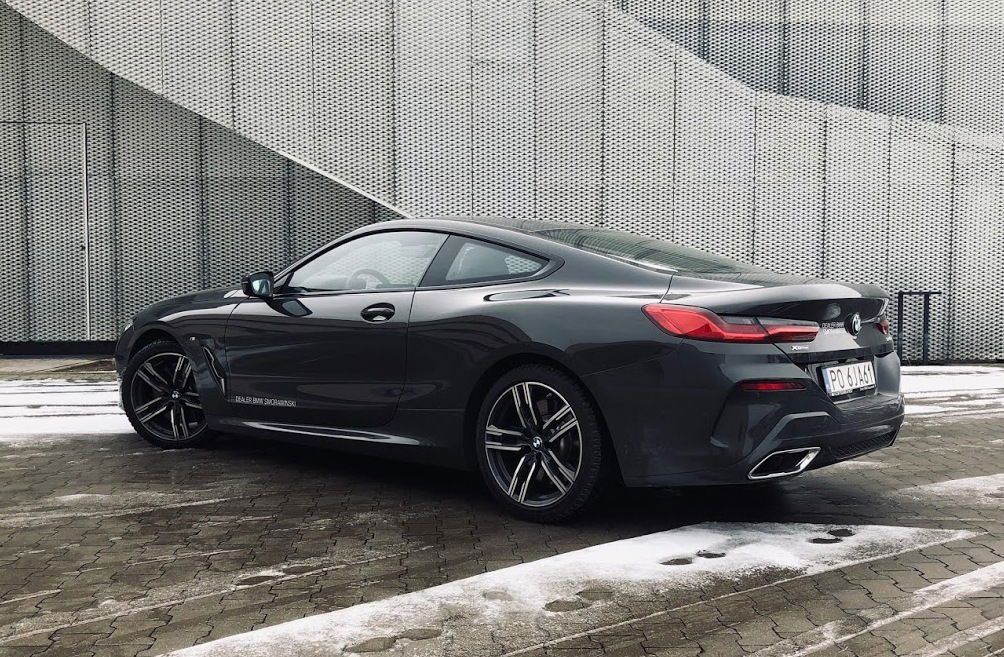
BMW 840D xDrive
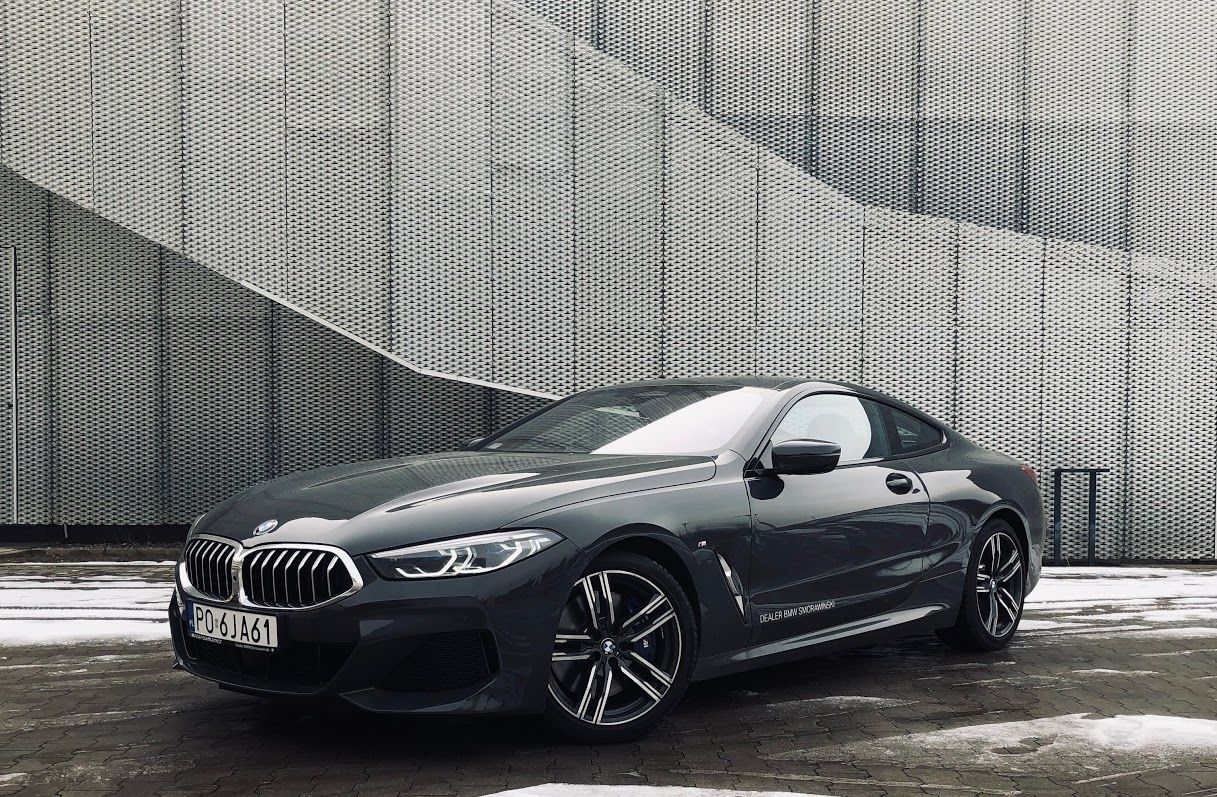
Taking advantage of one of the few sunny days during winter, I decided to fulfill an idea that had been on my mind for a while—testing the BMW 8 Series.
I had been following the development of the new model with the "8" designation from the very beginning and with great curiosity. From the moment the first concept car was unveiled, I knew it was going to be something special. Looking at its predecessor—the E31, which was a spectacular car not only in the German market but globally—I had high expectations. However, I wasn’t entirely sure what to expect. After all, despite using the number "8" in its name, this is actually a change in BMW's model naming strategy. As a result, we’re not dealing with a two-door 7 Series, as is the case with Mercedes (S / S Coupe, formerly the CL). The new 8 is essentially the successor to the discontinued 6 Series, which was itself a coupe version of the 5 Series.
There is, however, one aspect in which the new 8 will undoubtedly surpass its predecessor—it will get an M version. Of course, the upcoming M8 will not feature a naturally aspirated V12 like the E31, whose modified engine BMW later placed in the legendary McLaren F1. This came after BMW decided there was no market for an M-badged GT car and abandoned the project.

First impressions
You only get one shot at a first impression. One of the 8 Series’ undeniable strengths is its stunning silhouette. This massive coupe (just 8 cm shorter than the 5 Series G30 but 4 cm wider) grabs attention with its long, low-slung hood, sloping roofline, and most notably, the muscular rear fenders. These elements not only give the upper part of the car a sense of lightness but also perfectly emphasize its proportions and highlight the sporty character of the rear end. This is one of the few design features that remained almost unchanged from the concept version and is my favorite aspect of the styling.
Thanks to this design, the A-pillar has been beautifully shaped, flowing seamlessly into the roof and C-pillar, with the line extending all the way to the rear of the car. This creates two parallel lines running from the front all the way to the taillights, enhancing the car's dynamic look.
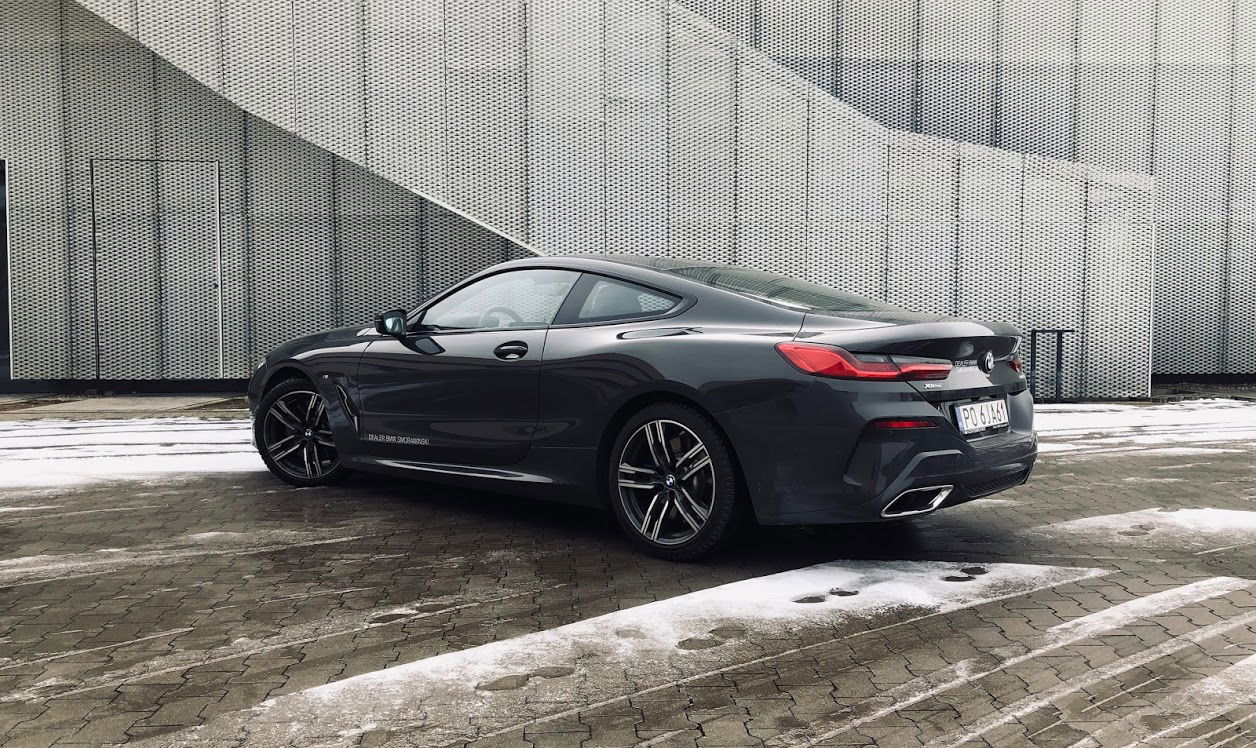
Despite its sleek and aerodynamic shape, the lower part of the vehicle—especially in the tested version with the M Sport package—is sharply sculpted with various air intakes, giving it an aggressive stance. For those wanting an even more race-inspired look, BMW offers a variety of carbon fiber additions, including front bumper elements, mirrors, a spoiler, a rear diffuser, and even a fully carbon fiber roof.
The 8 Series has the proportions of a classic Grand Tourer and is a beautifully styled vehicle. While one could discuss the design details at length, one thing is certain—I have yet to meet anyone who thinks the new 8 is ugly. It appeals to everyone.
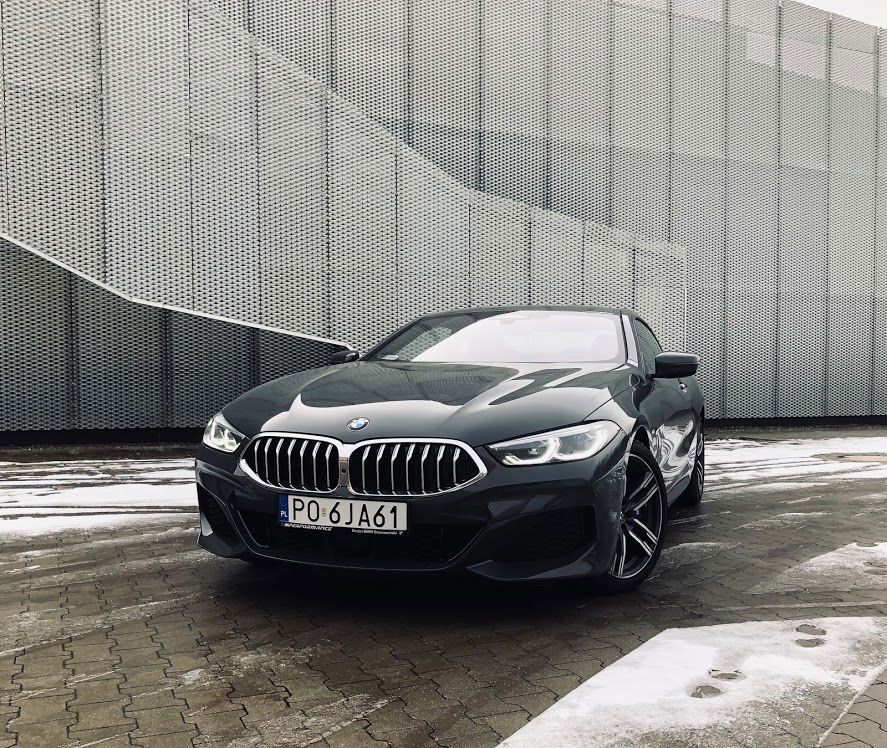
Interior
Opening the long, wide doors grants access to a world of luxury. Despite the car’s considerable size, the cabin doesn’t overwhelm with space. Instead, it wraps around the driver in a way that is characteristic of BMW, creating a sense of integration with the vehicle. The large, comfortable seat offers extensive adjustability, including lumbar support, side bolsters, and an extendable thigh rest.
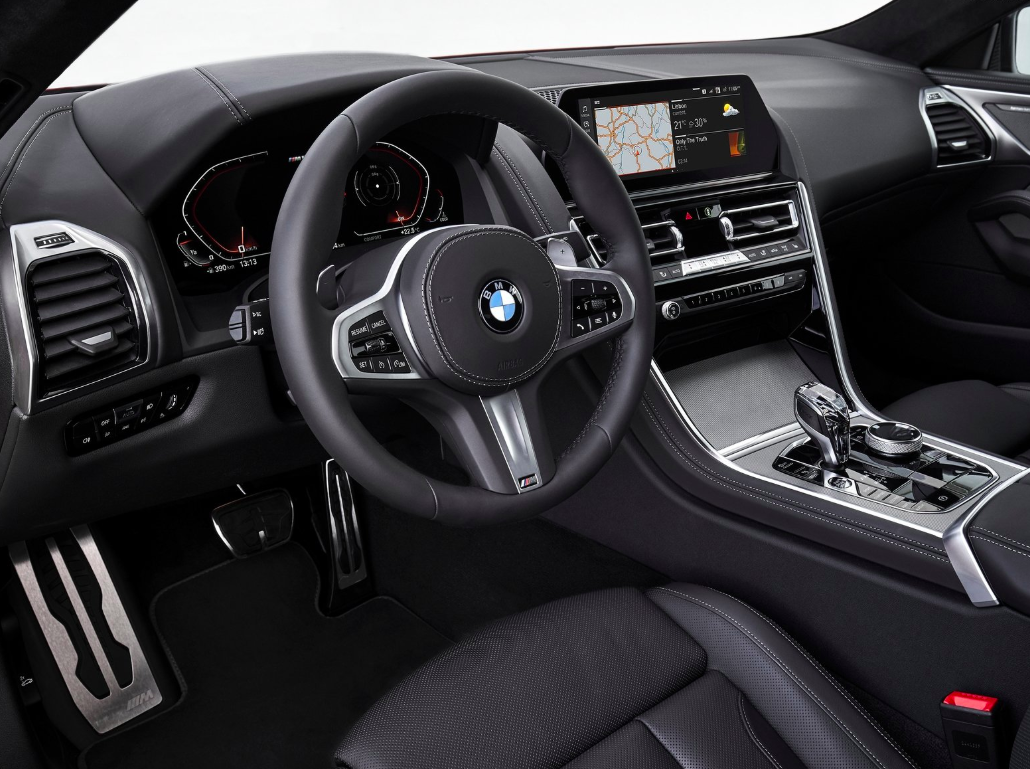
Next comes adjusting the M Sport steering wheel. The electric adjustment allows for precise positioning, and thanks to a wide range of reach adjustment, the wheel can be pulled close to the driver for an optimal position with the wrist resting naturally on the top of the wheel. Due to my own height, I spent some time fine-tuning my seat position, but anyone under 200 cm will quickly find a comfortable setup.

The 8 Series masterfully blends sportiness with luxury—exactly what a Grand Tourer should be. The modern dashboard is crowned with a large screen, Swarovski crystal accents (on the gear selector, start button, and volume control), and leather covering every possible surface. To reinforce the sporty character, aluminum inserts are used, and unlike in many new cars—even expensive ones—they are made of real metal, giving them a cool, premium touch.
The interior leaves no doubt—this is a luxury vehicle. Gesture control works brilliantly, reacting instantly and precisely to hand movements. With simple gestures, you can adjust the hi-fi system’s volume, answer calls, and even assign specific functions to customized hand movements.
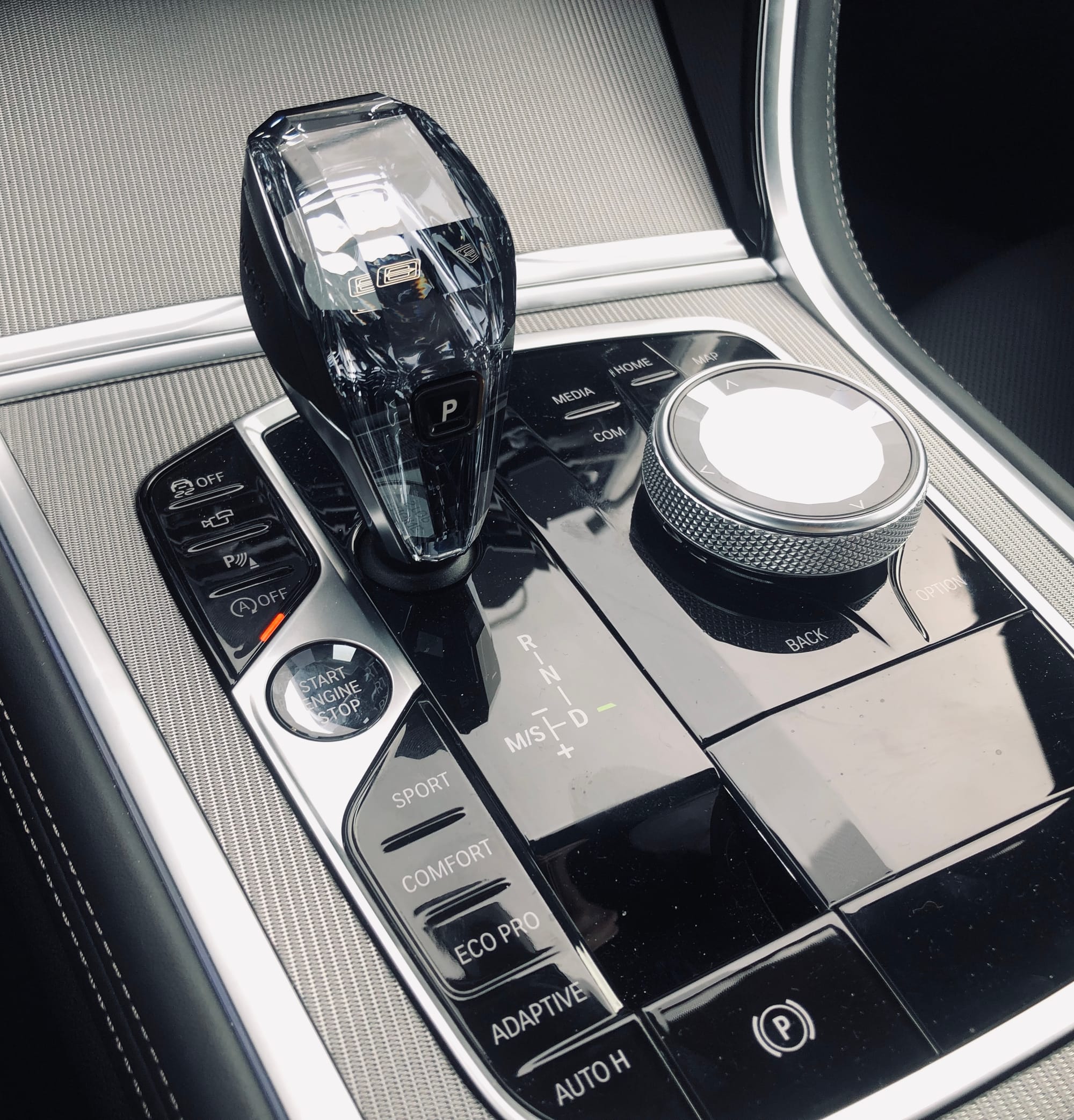
Driving Experience
Once you get comfortable in the interior, it's time to hit the road. From the moment you take off, the car’s responsiveness, agility, and precise steering immediately stand out. And it only gets better from there.
Even though the tested 840D is powered by a 3.0-liter inline-six diesel producing 320 horsepower, it surges forward with surprising eagerness. Subjectively, it feels like it has at least 50–100 more horsepower than the spec sheet suggests. This is largely thanks to the well-calibrated transmission, which extracts the full potential of the engine. Proof of this can be found in the 0–100 km/h time—just 4.9 seconds, despite the car weighing 1,830 kg! Additionally, the engine is impressively refined and well-insulated, with virtually no vibrations making their way into the cabin.
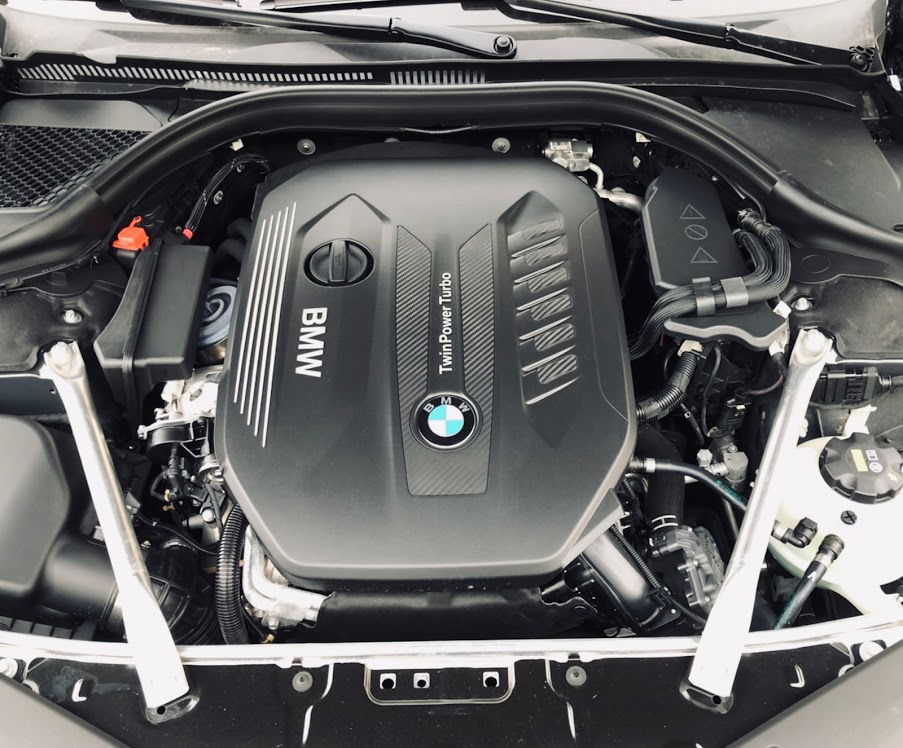
BMW diesels are known for their linear power delivery, but the 840D takes refinement to another level. A high-performance diesel that revs freely and doesn’t lose power at higher RPMs is a rarity. The car is always ready to shoot out of a corner. Helping with this is the rear-wheel steering system, which cleverly disguises the car’s size and weight—at the expense of slightly artificial steering feedback. It creates the illusion of driving a smaller vehicle, at least until you push it beyond its grip limits. At the edge of adhesion, the car reveals its mass and becomes hesitant to return to the desired line. Hopefully, BMW will release a purely rear-wheel-drive version for enthusiasts who appreciate traditional driving dynamics.
Another highlight of the 8 Series is its versatility. Next to the gear selector are several buttons that adjust the engine response, transmission behavior, and adaptive suspension. While drive modes are nothing new (even Passat drivers have them), in the 8 Series, they actually make a difference. In Sport mode, the car becomes razor-sharp and exploits its full chassis and engine potential, while in Comfort mode, the suspension softens, and the inline-six delivers silky smooth performance.
The 840D truly shines on the highway. It effortlessly eats up miles, offering excellent directional stability, a comfortable driving position, and superb cabin insulation. It’s a car built for long-distance cruising rather than aggressive canyon carving—and that’s exactly what it was designed for. Paired with a diesel engine, it’s a brilliant choice for traveling in supreme comfort.

Conclusion
The BMW 8 Series is an excellent platform and undoubtedly a well-executed car. Customers have a wide range of powertrain options to choose from, culminating in the highly anticipated M version.
BMW deserves praise for creating a car that can rival the Mercedes S-Class Coupe while offering a distinct driving character. The 8 Series is for those who value luxury and comfort but also seek a large coupe with engaging driving dynamics. It’s definitely a car for a driver who knows what they want.
Despite its stunning design, it doesn’t draw too much attention on the road (I observed pedestrians during my test drive)—though this might be due to the subtle color of the test car.
Lastly, a question worth asking: Is the new 8 Series better than the 1989 E31?
Can a modern car be better than one built 30 years ago? Objectively speaking, it’s impossible to answer—it’s a matter of taste.
Is an analog car better than one packed with electronics? Is an inline-six diesel superior to a naturally aspirated V12?
I’ll leave that for the reader to decide.
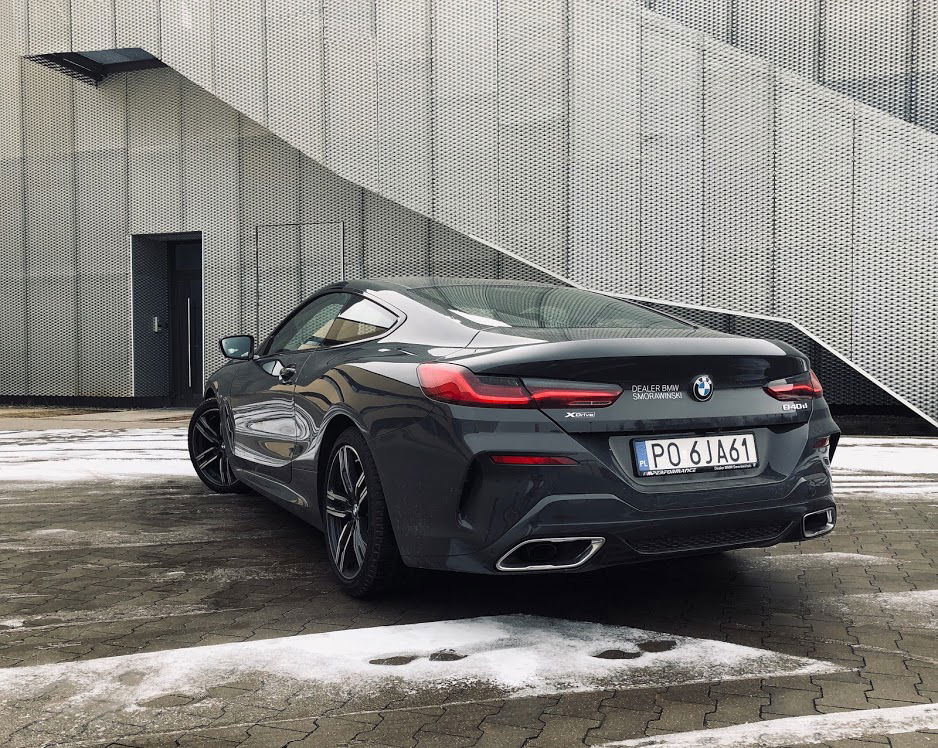
Special thanks to BMW Smorawiński for making this test drive possible.


